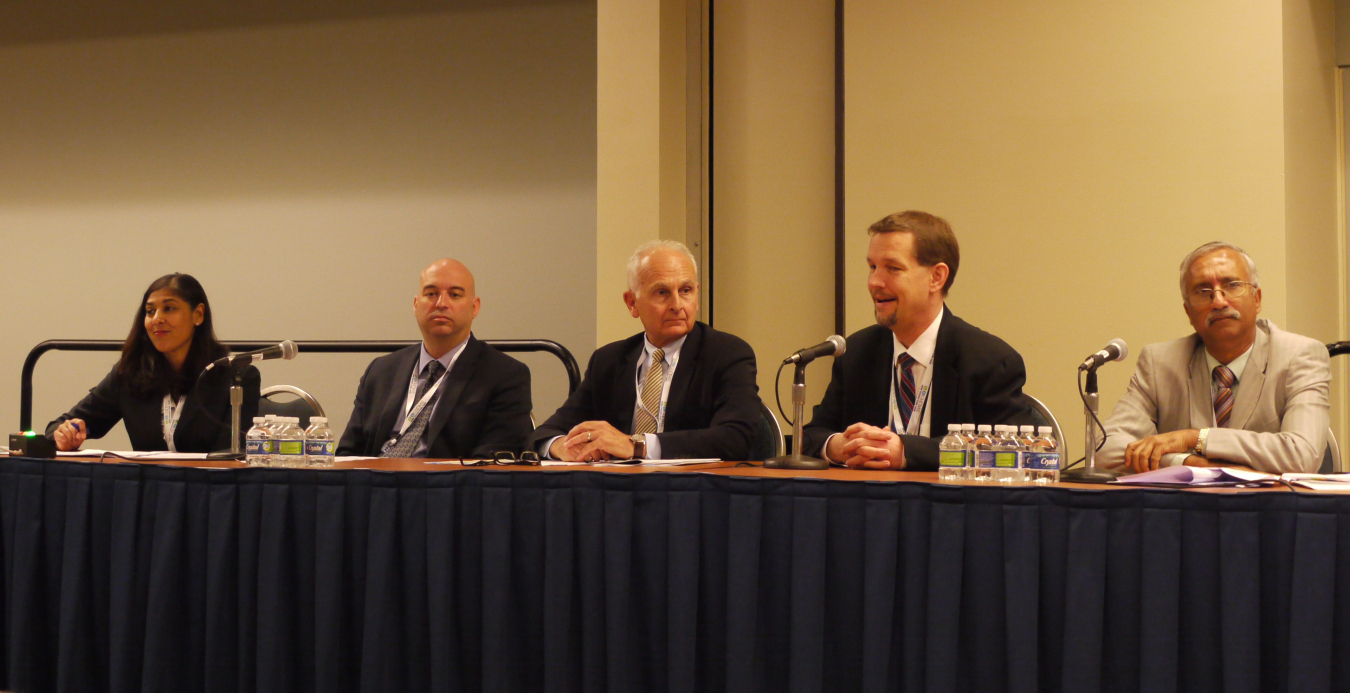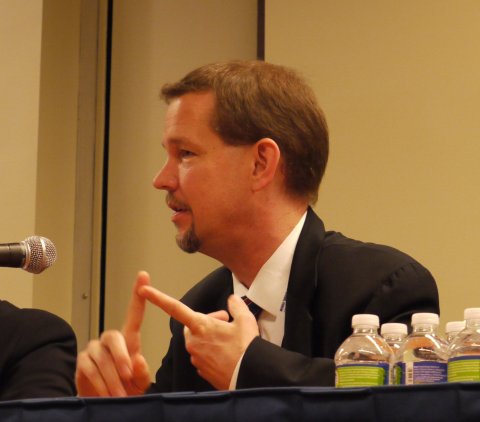
From left to right: Moderator Ramola Musante, panelists Ron Voglewede, Bill Varley, Rob Ivester, and S. Raghupathy.
Water is a part of every aspect of our lives. We expect the water we drink to be free from harsh chemicals and particles. We rely on it to clean our dishes, wash clothes and grow our food. We may not think about the role water plays in things like the generation of electricity or manufacturing, but it turns out that role is actually quite significant. Water scarcity and water management are major issues for manufacturers and utilities suppliers around the world. They require reliability in the availability and quality of their water sources and have to account for the associated costs of using water in their processes.
On Thursday, May 12, the Alliance to Save Energy hosted the 2016 Energy Efficiency Global Forum, an invitation-only opportunity to join hundreds of executives and policymakers from across sectors, disciplines, and borders. The event offered over 16 discussion-based sessions, one of which Dr. Rob Ivester, Deputy Director of the Advanced Manufacturing Office (AMO), was invited to participate. The panel topic was about the “water-energy nexus” – the interdependent relationship between water and energy systems. We use water for energy and we use energy for water. It was moderated by Ramola Musante, vice president of government relations at Ecolab. Panelists included Ron Voglewede, senior manager of energy and environmental strategy at Whirlpool; Bill Varley, president of New Jersey American Water and senior vice president of the Northeast Division of American Water; and S. Raghupathy, executive director and head of the Confederation of Indian Industry Sohrabji Godrej Green Business Centre. Panelists discussed how efforts could be scaled up to meet the critical need for efficiency in water infrastructure and end use.
AMO has extensive expertise in energy and water efficiency technology, modeling, analysis, and analyzing data and can contribute to understanding the issues and are committed to increasing water efficiency in the industrial and manufacturing sectors across the entire water-energy nexus. During the panel, Dr. Ivester gave a few examples of the work we are doing related to the water-energy nexus:
- Better Buildings Challenge Water Savings Initiative – Industrial partners of the Better Plants Challenge (a sector-focused sub-program of the Better Buildings Challenge) set water savings goals in addition to energy savings goals.
- Industrial Assessment Centers (IAC) – Engineering students conduct free assessments of small- and medium-sized manufacturers to identify opportunities for energy and water savings. The IAC program is also expanding to assess water supply and wastewater treatment facilities.
- Combined Heat and Power Technical Assistance Partnerships (CHP TAPS) – Partners learn how to implement practices such as utilizing on-site furnaces or boilers to produce thermal energy and convert waste heat to power, reducing the amount of water required for energy generation.
- Superior Energy Performance (SEP) – A group of leading water and wastewater treatment agencies, including Better Plants partners, are demonstrating the energy and efficiency benefits of implementing the SEP program through the SEP Water and Wastewater Pilot Project.
- Research and Development (R&D) Projects – AMO’s robust R&D portfolio creates a pathway to new technologies for the future. One example is AMO’s focus on water desalination, specifically encouraging research into methods to increase the efficiency of desalination without an increase in cost or energy usage.
To read the Energy Efficiency Global Forum’s highlights on the water-energy nexus panel, click here.


